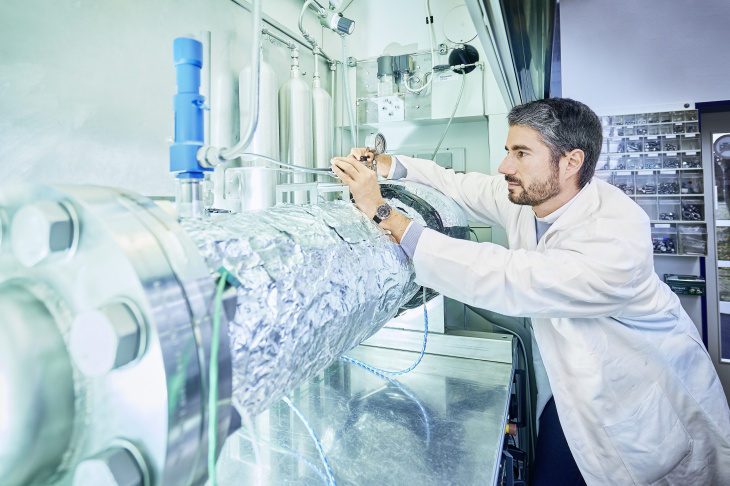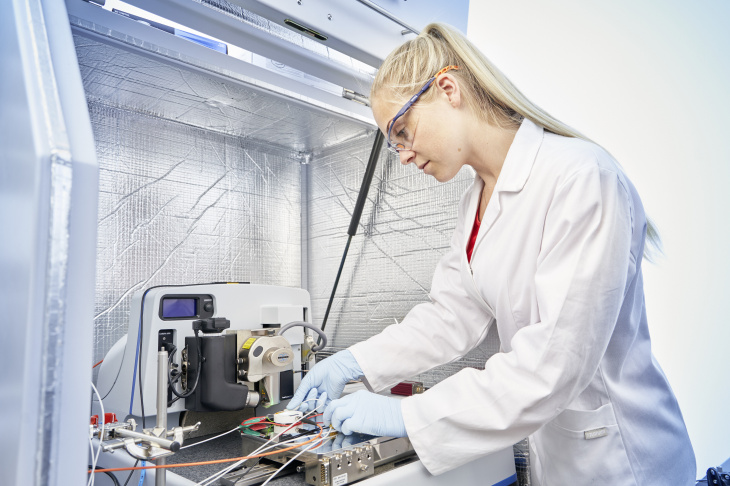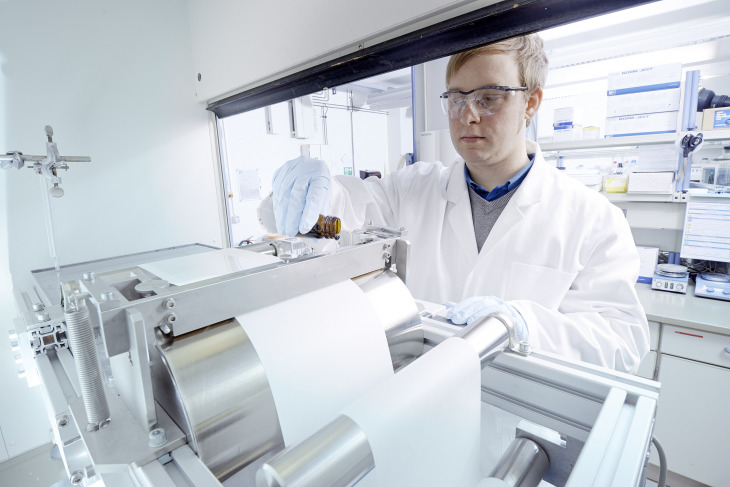Overview: Hydrogen
In Geesthacht, we are researching the efficient, safe and climate-friendly production, transport, storage and use of hydrogen as an energy carrier.
We store hydrogen in metal hydrides - fast, safely and energy-efficiently.

This tank is part of the HyCARE project, in which a modular tank system is being developed that can contain at least 40 kilograms of hydrogen in a very small space. Photo: Hereon/Christian Schmid
Like a sponge, metal hydrides absorb hydrogen - and release it completely. The advantages: high energy density, high energy efficiency and high safety, since moderate pressures and temperatures are used. We are researching the economical compression and energy-efficient storage of hydrogen using metal hydrides. In doing so, we bridge the gap from basic materials research to the design of individual components and system integration. We design components for the supply infrastructure with hydrogen for both stationary systems and vehicles. With the help of unique test rigs and comprehensive computer simulation, we develop customized solutions for sustainable energy supply and mobility. Institute of Hydrogen Technology
We are researching the climate-neutral production of hydrogen - with artificial leaves.

Dr. Ragle Raudsepp studies the photoactivity of artificial leaves in the lab. Photo: Hereon/Christian Schmid
We refer to the concept for energy-efficient and sustainable production of hydrogen as an energy carrier, which is based on natural photosynthesis, as an "artificial leaf". To achieve the most efficient interaction with light, we develop special surface coatings and structuring. We have unique setups for high-resolution experiments, which are combined with powerful digital simulation tools. In this way, we achieve a comprehensive understanding of solar-assisted reactions that can be used specifically for climate protection and a sustainable energy supply. Institute of Functional Materials for Sustainability
We develop energetically effective processes for the separation and purification of hydrogen.

Membranes of all kinds are developed and manufactured in the membrane production hall - among other things for the separation of hydrogen. Photo: Hereon/Christian Schmid
Hydrogen is mixed with other gases in various generation processes and during transport. For storage and use, however, it is needed as pure as possible. To this end, we develop membranes - for example for separation from the natural gas network, removal of CO2 or drying. Here, we consider the entire chain of research and development: from the synthesis of the membrane material to its processing and use in the test facility. In doing so, we combine world-leading experimental methods with modeling and simulation activities. Institute of Membrane Research
